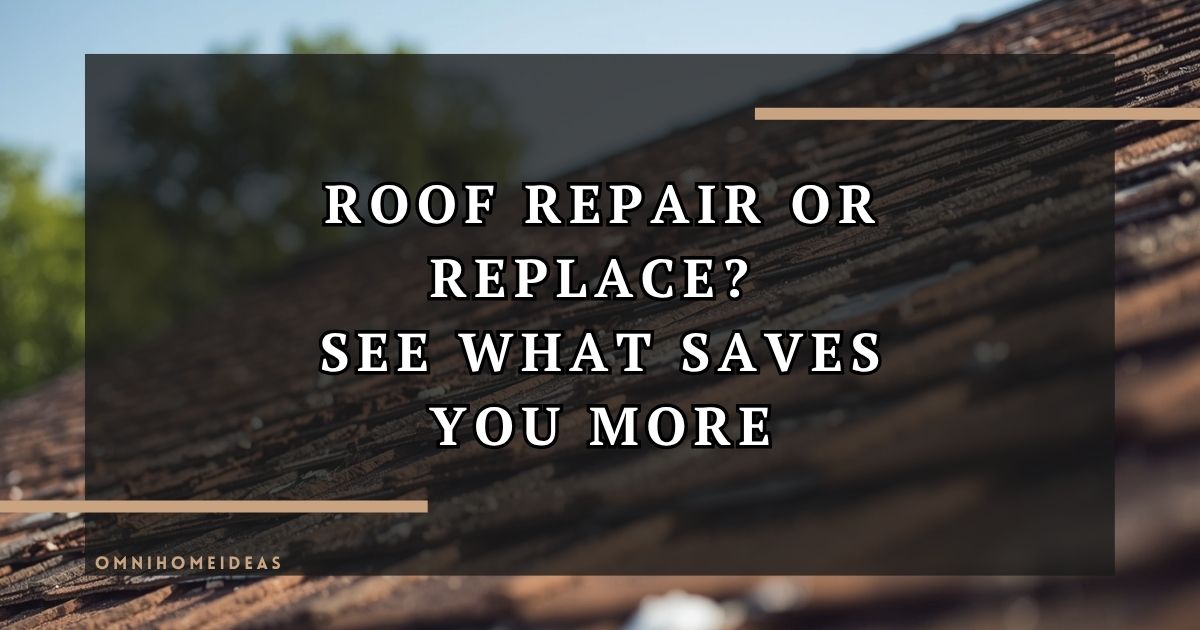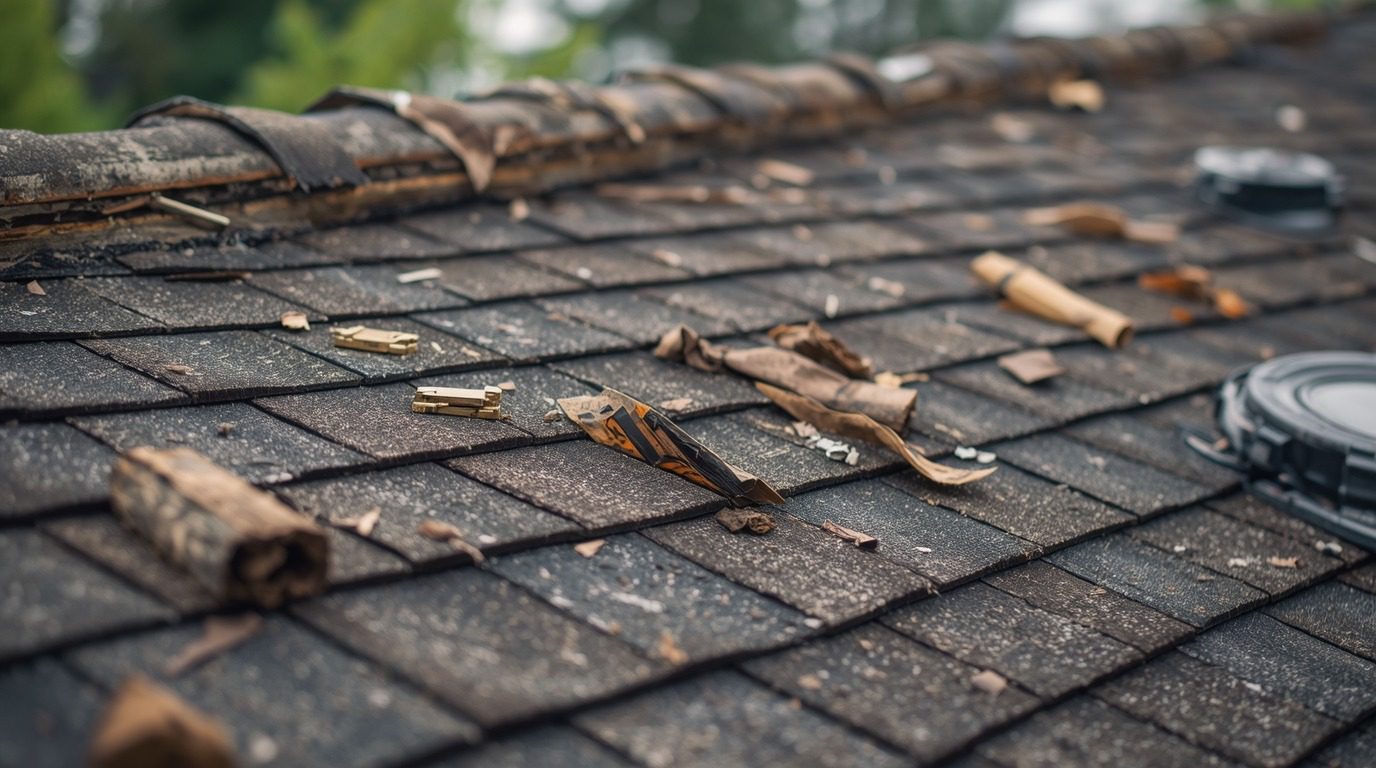Homeowners can face a difficult decision when it comes to choosing between roof repair or replacement, especially when age, damage, and budget all come into play. A roof affects not just the structure of a home but also its visual character and interior comfort.
Knowing how to evaluate the situation can help protect your investment and maintain the aesthetic harmony of your living space.

The Lifespan of Your Roof
Every roofing material has a natural lifespan that influences how long it can protect a home from weather and wear. Asphalt shingles, for example, often last between 15 and 30 years, depending on the quality and local climate.
Metal, tile, and slate roofs tend to last much longer, sometimes exceeding five decades with the right care. When a roof begins to age, signs such as curling shingles, faded color, or small leaks might seem minor. However, they often indicate a deeper issue within the roofing system.
Age alone is not always the deciding factor. Some roofs retain structural integrity beyond their expected lifespan, while others deteriorate faster due to poor ventilation or storm damage.
Inspecting the attic for water stains or insulation damage can reveal hidden leaks that shorten a roof’s life. The age of the roof, combined with visible and internal signs of deterioration, forms the basis for deciding the next step.
Evaluating the Extent of Damage

The level of damage often dictates whether repairs can solve the problem or if a full replacement is necessary. Minor issues such as missing shingles or small punctures can usually be fixed without replacing the entire roof.
However, widespread damage, sagging, or extensive water infiltration may signal structural weakness. Water has a way of finding unseen paths; once it seeps through layers, it can compromise insulation and ceiling materials, leading to costly interior repairs.
Storms can intensify this process. Hail, wind, or falling branches can loosen shingles or tear flashing, leaving the surface vulnerable to leaks. Even if a roof looks intact from the ground, subtle cracks or weakened spots may exist.
A professional inspection offers clarity and helps identify which issues can be managed through repair and which suggest deeper failure. The sooner a problem is caught, the more likely a repair will suffice, saving time and expense.
Balancing Short-Term Fixes and Long-Term Value
Budget can play a big part in determining how to move forward. Repairs are usually less expensive upfront, which appeals to homeowners looking for a quick solution. However, continual patching can become more costly over time if the underlying structure continues to deteriorate.
Replacement represents a higher initial cost but brings renewed longevity and peace of mind.
From a home improvement standpoint, investing in a new roof can also increase property value and curb appeal. It can complement exterior design choices, such as updated siding or trim, creating a more cohesive look.
For those planning to sell, a new roof often makes a property more attractive to buyers who want move-in-ready assurance.
Even for homeowners who plan to stay long-term, knowing that the home is well-protected brings comfort during every stormy season.
Considering Energy Efficiency and Indoor Comfort

Aging or damaged roofing materials can impact more than the home’s exterior. Poor insulation or small leaks allow conditioned air to escape, leading to fluctuating indoor temperatures and higher energy bills.
Repairing minor leaks can improve efficiency, but if the roof’s underlayment has degraded, the benefit may be temporary. Replacing the roof with modern, energy-efficient materials can reduce heat transfer, keeping interiors cooler in summer and warmer in winter.
For those with design in mind, new roofing materials also offer aesthetic flexibility. Modern shingles, tiles, and metal finishes come in colors and textures that coordinate with a home’s architectural style.
This combination of functionality and beauty ties into interior design by maintaining consistent comfort and visual harmony throughout the space. A strong, well-insulated roof contributes to a stable environment where interior finishes, furnishings, and decor last longer and perform better.
Maintenance Can Influence Decision-Making
Consistent maintenance can extend a roof’s life considerably, delaying the need for replacement. Regular inspections, cleaning gutters, and removing debris prevent water buildup that weakens materials over time. A well-maintained roof resists damage from seasonal changes and harsh weather.
However, when maintenance becomes a constant battle against recurring problems, it may be more cost-effective to invest in a replacement.
Homeowners often underestimate how quickly small issues can multiply. Moss or algae growth, for instance, may seem cosmetic, yet they trap moisture that accelerates material decay. Routine upkeep preserves both the performance and the visual appeal of the roof.
The decision to repair or replace often becomes clearer when maintenance can no longer keep deterioration at bay.
Budgeting for the Best Outcome

Financial considerations often determine timing. Before making a decision, it’s wise to compare the cost of recurring repairs with the investment of a full replacement. Financing options or insurance coverage for storm damage may make replacement more attainable.
Homeowners can also view replacement as part of an overall home improvement strategy rather than an isolated project. When planned alongside exterior painting, window upgrades, or gutter replacements, the result can transform both appearance and function.
Budgeting should include not only materials and labor but also the potential energy savings that come from improved insulation and ventilation. A thoughtful investment now can prevent expensive repairs later.
Whether upgrading for comfort or preparing a property for sale, balancing affordability with long-term reliability remains the best approach.
The Influence of Design and Curb Appeal
A new roof offers the chance to rethink a home’s exterior design. The texture, color, and pattern of roofing materials can dramatically change the look of a house. For example, dark shingles might create a bold, modern contrast against light siding, while clay tiles lend warmth and Mediterranean charm.
Even the shape and pitch of the roof can affect how light interacts with the facade throughout the day, subtly influencing interior ambiance. When choosing between repair and replacement, aesthetics should not be overlooked. A new roof can harmonize with updated landscaping, modern windows, or redesigned entryways.
These exterior improvements often mirror interior design trends, blending natural materials, balanced color palettes, and cohesive style. The decision then becomes not only practical but also artistic, allowing homeowners to shape how their home feels from both inside and out.
Professional Assessment and Timing

Timing matters as much as the decision itself. Acting too late may lead to structural issues that drive costs higher. Acting too soon, on the other hand, could mean replacing a roof that still has years of life left.
Getting an expert opinion helps clarify the situation. Professionals can identify weak points, test for moisture intrusion, and evaluate whether the roof’s framework can support another layer or needs full removal.
A well-timed repair before severe weather can prevent more extensive problems. Likewise, planning a replacement during mild weather can speed up installation and reduce disruption. Making an educated choice based on timing, inspection, and realistic expectations protects both the home and the budget.
Making the Right Decision for Your Home
Choosing between repair or replacement is a decision that merges practicality with design. The roof shapes the character of a home while defending it from the elements. Age, damage, and financial goals each influence the right path forward.
Repairing can be smart for younger roofs or localized issues, while replacement may bring lasting protection and renewed style for those nearing the end of their lifespan.
Whichever route is taken, the focus should remain on preserving the home’s safety, comfort, and beauty. Thoughtful evaluation backed by professional insight helps homeowners act with confidence, knowing their roof supports not only the structure but the spirit of the space within.

